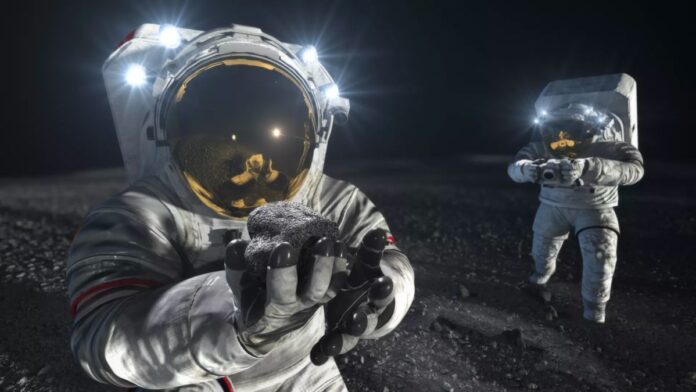NASA is soliciting the scientific community for ideas about instruments and experiments that could accompany Artemis 3 astronauts on their mission to the moon.
In NASA’s call for deployable instruments, announced earlier this month, the agency specified that it was looking for experiments that take advantage of the unique location of the Artemis 3 landing, which will be within 6 degrees latitude of the moon’s south pole. That locale has remained untouched despite decades of lunar exploration.
Many of the proposed landing sites around the lunar south pole are among the oldest sites on the moon, including occluded “shadow” regions that the sun’s light hasn’t reached in billions of years. With the potential for ancient water ice and other accessible “volatiles” in the craters around the south pole, NASA is especially keen on getting scientific experiments that seek to probe these useful materials.
Related: NASA’s Artemis 3 mission: Landing humans on the moon
Artemis, which is scheduled to launch in late 2025, will be humanity’s first return to the moon since the Apollo program ended in 1972.
In soliciting proposed experiments for Artemis 3 astronauts to deploy on the moon’s surface, NASA spelled out several other experimental goals that it says will be given priority for consideration. These include:
- Understanding planetary processes
- Understanding the character and origin of lunar polar volatiles
- Interpreting the impact history of the Earth-moon system
- Revealing the record of the ancient sun and our astronomical environment
- Observing the universe and the local space environment from a unique location
- Conducting experimental science in the lunar environment
- Investigating and mitigating exploration risks
“These science packages will enable a variety of geophysical and environmental investigations,” the agency wrote in its posting announcing the solicitation. “In addition to their intrinsic science value, some measurements from deployed instruments may also reduce risks to astronauts.”
Proposals for Artemis 3 need to be submitted by June 30, 2023, which isn’t a whole lot of time for researchers to get their paperwork submitted. Fortunately, NASA doesn’t plan to stop with Artemis 3; the agency will solicit proposals for Artemis 4, the Artemis program‘s second crewed landing on the moon as well.
Even if you’re not a tenured academic with big-time funding, you can still throw your hat in the ring. After all, NASA Exploration Systems Development Associate Administrator Jim Free put out a public call on Twitter two weeks ago. If you think you’ve got a great idea for an experiment that NASA can run on the moon, the worst anyone can say is no.
And who knows? Making a baking soda and vinegar volcano on the moon might not be as silly an idea as you might think. Just make sure you read the instructions on NASA’s program site for all the pertinent details first.

